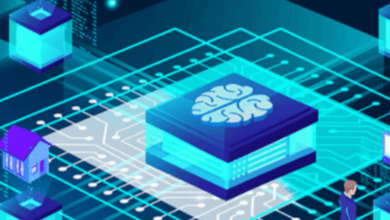What impact will quantum computing have on data security and encryption?

Understanding Quantum Computing
Basics of Quantum Computing
Quantum computing leverages the principles of quantum mechanics to process information in fundamentally different ways than classical computers. Unlike classical bits, which represent data as either 0 or 1, quantum bits or qubits can exist in multiple states simultaneously due to superposition.
Quantum Bits (Qubits)
Qubits are the basic units of quantum information. They exploit the quantum phenomenon of superposition, where they can be in a state of 0, 1, or any quantum superposition of these states. This allows quantum computers to perform complex calculations at unprecedented speeds.
Superposition and Entanglement
Superposition allows qubits to represent multiple possibilities at once. Entanglement, another quantum property, enables qubits to be interconnected such that the state of one qubit can depend on the state of another, no matter the distance between them. These properties enable quantum computers to solve specific types of problems much faster than classical computers.
Quantum Algorithms
Quantum algorithms, like Shor’s algorithm for factoring large numbers and Grover’s algorithm for database searching, demonstrate quantum computing’s potential to solve problems that are currently infeasible for classical computers.
Current State of Quantum Computing
Quantum computing is still in its nascent stages, with significant strides being made in qubit coherence, error correction, and quantum algorithm development. Companies like IBM, Google, and Microsoft are leading the charge in developing quantum hardware and software.
Data Security and Encryption
Traditional Encryption Methods
Current data security relies heavily on encryption algorithms to protect sensitive information. These include symmetric encryption, where the same key is used for both encryption and decryption, and asymmetric encryption, which uses a public key for encryption and a private key for decryption.
Symmetric vs. Asymmetric Encryption
Symmetric encryption algorithms, such as AES (Advanced Encryption Standard), are efficient and fast but require secure key distribution. Asymmetric encryption, including RSA (Rivest-Shamir-Adleman), provides better key management solutions but is computationally more intensive.
Public Key Infrastructure (PKI)
PKI is a framework that uses asymmetric encryption to secure communications. It relies on a pair of cryptographic keys, public and private, to encrypt and decrypt data, ensuring the confidentiality, integrity, and authenticity of digital communications.
Vulnerabilities in Current Encryption
Traditional encryption methods, while robust against classical computing attacks, are vulnerable to quantum attacks. Quantum computers can exploit mathematical properties that underpin these algorithms, rendering them insecure.
Impact of Quantum Computing
Quantum Computing and Cryptography
Quantum computing threatens to break many of the encryption methods currently in use. Shor’s algorithm, for example, can efficiently factor large integers, undermining the security of RSA encryption and other cryptographic systems based on integer factorization or discrete logarithm problems.
Breaking Traditional Encryption
Quantum computers can solve specific problems exponentially faster than classical computers. For instance, breaking a 2048-bit RSA encryption with a classical computer would take billions of years, but a sufficiently powerful quantum computer could do it in a matter of hours.
Quantum-Safe Cryptography
To mitigate these risks, researchers are developing quantum-safe cryptographic algorithms. These post-quantum cryptographic methods are designed to be secure against both classical and quantum attacks.
Post-Quantum Cryptography
Post-quantum cryptography involves creating encryption methods based on mathematical problems that are hard for quantum computers to solve. Algorithms such as lattice-based cryptography, hash-based cryptography, and code-based cryptography are promising candidates.
Quantum Key Distribution (QKD)
QKD leverages the principles of quantum mechanics to enable secure key exchange. It allows two parties to generate a shared, secret key, which can then be used for encryption and decryption, with the security guaranteed by the laws of quantum physics.
Challenges and Risks
Technical Challenges
Developing scalable quantum computers is fraught with technical difficulties, including qubit coherence, error rates, and quantum error correction. These challenges must be overcome to realize the full potential of quantum computing.
Implementation Challenges
Integrating quantum-safe cryptography into existing systems poses significant implementation challenges. Transitioning from current cryptographic standards to post-quantum standards requires extensive testing, validation, and deployment efforts.
Regulatory and Ethical Concerns
Quantum computing raises regulatory and ethical issues, such as data privacy, the potential for misuse, and the need for international cooperation to establish quantum-safe cryptographic standards.
Future of Data Security
Adapting to Quantum Threats
Organizations must prepare for the advent of quantum computing by assessing their current cryptographic infrastructure and planning for the transition to quantum-safe methods.
Developing Quantum-Safe Protocols
Research and development in quantum-safe protocols are crucial. Collaboration between academia, industry, and government is essential to develop and standardize these protocols.
Government and Industry Initiatives
Governments and industry bodies are already working on initiatives to address the quantum threat. For example, NIST (National Institute of Standards and Technology) is leading efforts to standardize post-quantum cryptographic algorithms.
Long-Term Outlook
The long-term outlook for data security in the quantum era involves continuous innovation in cryptographic techniques, robust quantum-safe standards, and widespread adoption of these methods to ensure the security of digital information.
Conclusion
Quantum computing represents a paradigm shift with profound implications for data security and encryption. While it poses significant challenges to traditional cryptographic methods, the development of quantum-safe cryptography and proactive measures can safeguard digital communications in the quantum age. As quantum technology continues to evolve, staying ahead of these advancements is crucial for maintaining robust data security.
FAQs
What is quantum computing?
Quantum computing is a type of computing that uses the principles of quantum mechanics to process information, allowing for faster and more efficient problem-solving compared to classical computing.
How does quantum computing affect encryption?
Quantum computing can break many traditional encryption methods by solving mathematical problems that classical computers find intractable, posing a significant threat to current data security.
What is post-quantum cryptography?
Post-quantum cryptography involves developing cryptographic algorithms that are secure against both classical and quantum attacks, ensuring data protection in the quantum era.
What is quantum key distribution (QKD)?
QKD is a method of secure communication that uses quantum mechanics to exchange cryptographic keys, providing security guaranteed by the laws of physics.
Are there any current solutions to quantum threats?
Yes, researchers are developing quantum-safe cryptographic methods and protocols to protect data against quantum computing threats. These include lattice-based, hash-based, and code-based cryptography.
What steps should organizations take to prepare for quantum computing?
Organizations should assess their current cryptographic infrastructure, stay informed about advancements in quantum-safe cryptography, and plan for a transition to post-quantum cryptographic methods.







